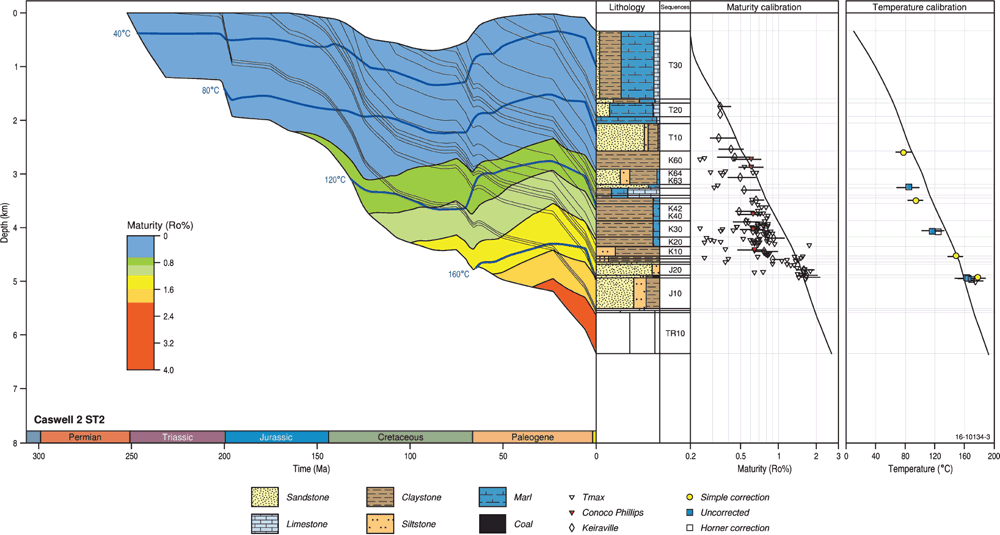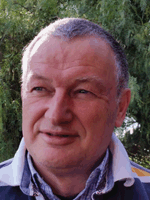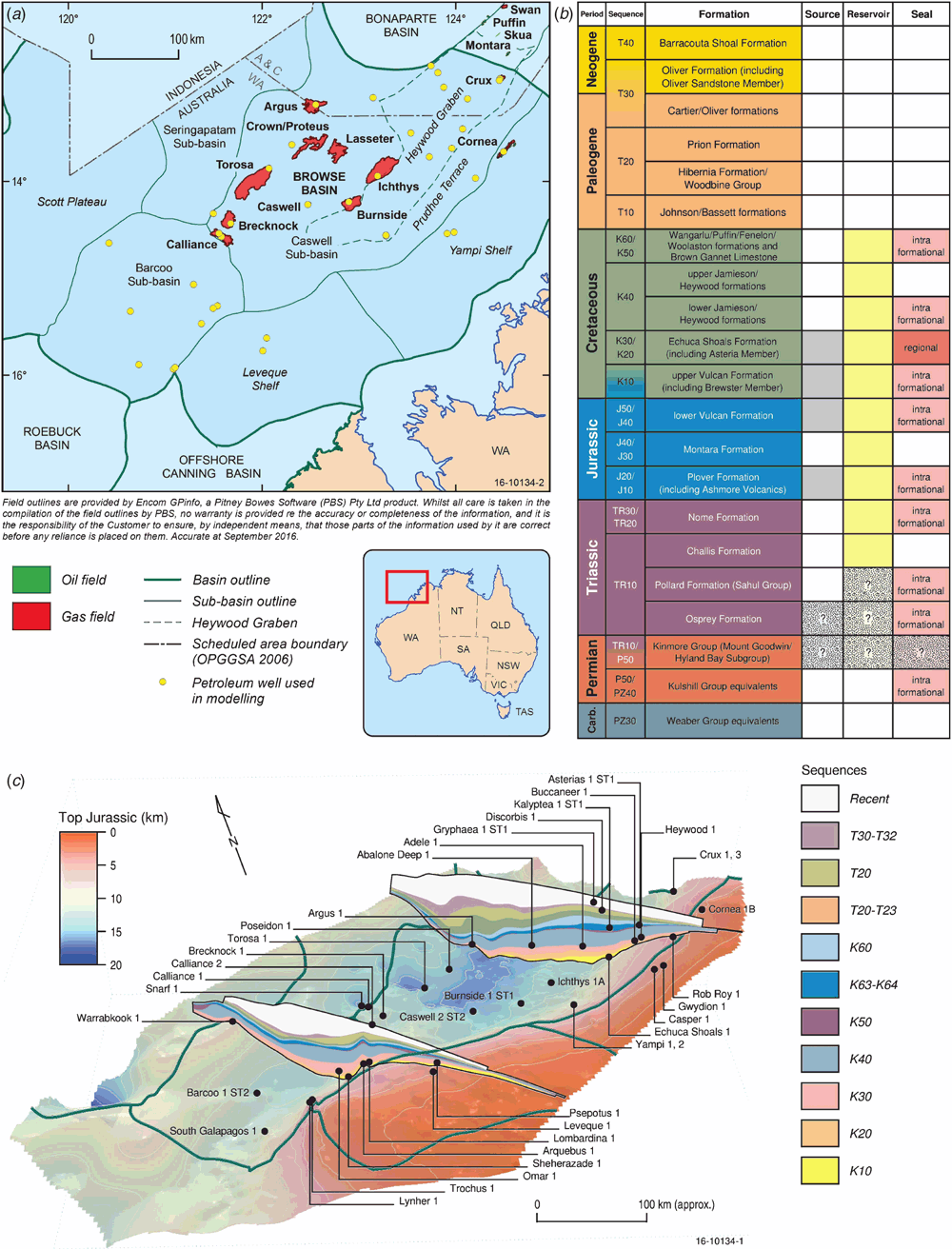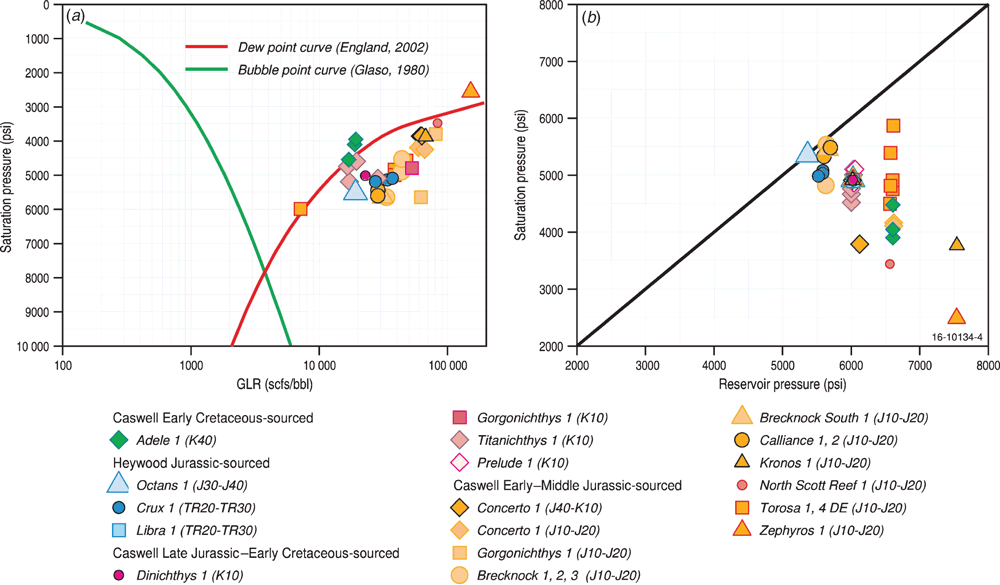Integrated petroleum systems analysis to understand the source of fluids in the Browse Basin, Australia
Tehani Palu A , Lisa Hall A , Emmanuelle Grosjean A C , Dianne Edwards A , Nadege Rollet A , Karen Higgins A , Christopher Boreham A , Andrew Murray B , Duy Nguyen A , Kamal Khider A and Tamara Buckler AA Geoscience Australia, GPO Box 378, Canberra, ACT 2601, Australia.
B Murray Partners PPSA Pty Ltd, 20 Ellesmere Heights, Hillarys, WA 6025, Australia.
C Corresponding author. Email: emmanuelle.grosjean@ga.gov.au
The APPEA Journal 57(2) 781-788 https://doi.org/10.1071/AJ16191
Accepted: 9 March 2017 Published: 29 May 2017
Abstract
The Browse Basin is located offshore on Australia’s North West Shelf and is a proven hydrocarbon province, hosting gas with associated condensate in an area where oil reserves are typically small. The assessment of a basin’s oil potential traditionally focuses on the presence or absence of oil-prone source rocks. However, light oil can be found in basins where source rocks are gas-prone and the primary hydrocarbon type is gas-condensate. Oil rims form whenever such fluids migrate into reservoirs at pressures less than their dew point (saturation) pressure. By combining petroleum systems analysis with geochemical studies of source rocks and fluids (gases and liquids), four Mesozoic petroleum systems have been identified in the basin.
This study applies petroleum systems analysis to understand the source of fluids and their phase behaviour in the Browse Basin. Source rock richness, thickness and quality are mapped from well control. Petroleum systems modelling that integrates source rock property maps, basin-specific kinetics, 1D burial history models and regional 3D surfaces, provides new insights into source rock maturity, generation and expelled fluid composition.
The principal source rocks are Early–Middle Jurassic fluvio-deltaic coaly shales and shales within the J10–J20 supersequences (Plover Formation), Middle–Late Jurassic to Early Cretaceous sub-oxic marine shales within the J30–K10 supersequences (Vulcan and Montara formations) and K20–K30 supersequences (Echuca Shoals Formation). These source rocks contain significant contributions of terrestrial organic matter, and within the Caswell Sub-basin, have reached sufficient maturities to have transformed most of the kerogen into hydrocarbons, with the majority of expulsion occurring from the Late Cretaceous until present.
Keywords: condensate, dew point, gas, geochemistry, oil, source rocks.
Introduction
The Browse Basin located offshore on Australia’s North West Shelf hosts considerable gas and condensate resources. It is poised to become Australia’s next major conventional liquefied natural gas (LNG) province with the Ichthys, Prelude and Concerto fields currently under development and recent discoveries at Burnside, Lasseter and Crown/Proteus in the Caswell Sub-basin (Fig. 1a). Other significant gas accumulations are located along the Scott Reef Trend (Calliance, Brecknock, Torosa), as far north as Argus, and in the Heywood Graben (Crux). Oil discoveries are presently sub-economic and confined to the central Caswell Sub-basin (Caswell) and Yampi Shelf (Cornea, Gwydion).
This study combines a pseudo-3D basin model with a review of source rock data to gain an understanding of their distribution, quality and thermal maturity. Integration of this source rock assessment with fluid characteristics provides insights into the oil and gas prospectivity of the Browse Basin.
Burial and thermal history modelling set-up
A regional 3D geological model of the Browse Basin was developed from new seismic interpretations (Rollet et al. 2016a) and forms the basis of a pseudo-3D petroleum systems model (Fig. 1a). Information on the regional petroleum systems elements of the basin is limited below the Middle Triassic (Fig. 1b); hence, the basin model encompasses the Cretaceous–Jurassic petroleum systems, estimates the Triassic as the lower boundary, and assumes the top Permian as the basement for the thermal model boundary. The model was calibrated using corrected temperature and maturity data from 34 wells (Fig. 2).

|
Source rocks and charge history
Browse Basin source rocks are typically difficult to characterise because they are either sparsely drilled and/or sampled, or have only been penetrated on structural highs and basin margins where their quality may not be representative. Indicative source rock characteristics were assigned based on an updated compilation of quality-controlled total organic carbon (TOC), Rock-Eval pyrolysis and vitrinite reflectance data. The source rock property data were integrated with the pseudo-3D petroleum systems model to predict transformation ratio, maturity and charge history. Kerogen types were assigned by depositional environment and generalised expulsion parameters were applied (Pepper and Corvi 1995a, 1995b).
J10–J20 supersequences (Plover Formation)
Source rocks within the J10–J20 supersequences were deposited in extensive fluvio-deltaic systems that extended across most of the basin. They include pro-delta shales, coaly shales and thin coals containing abundant terrestrial organic matter with significant gas generation potential (kerogen type D/E, Pepper and Corvi 1995a, 1995b; equivalent to type III). Source rock distribution is difficult to constrain due to high sedimentation rates and the ephemeral nature of the fluvial and paralic environments (Blevin et al. 1998b). Transformation ratios reach up to 1 (>2% Ro) throughout the central Caswell Sub-basin (Fig. 2). Hydrocarbon expulsion began in localised areas in the Late Jurassic, followed by the main phase of expulsion in the Late Cretaceous. The Barcoo Sub-basin has not experienced the same amount of burial as the Caswell Sub-basin; hence, transformation of the kerogen is less extensive, but still reaches up to 0.95 in the deepest depocentre (~1.6% Ro). Onset of expulsion occurred in the Jurassic, with peak hydrocarbon expulsion occurring during the latest Cretaceous.
J30–K10 supersequences (Vulcan and Montara formations)
Source rocks within the J30–K10 supersequences are predominantly gas prone (kerogen type D/E); however, thin condensed mudstones—containing type B (equivalent to type II) kerogen—related to flooding events could be a source of liquid hydrocarbons where organic richness is sufficient (Blevin et al. 1998b). Transformation ratios reach 0.98 (~2% Ro) in the deepest part of the Caswell Sub-basin and the onset of hydrocarbon expulsion occurred in the latest Cretaceous. In the deepest section of the Barcoo Sub-basin, transformation ratios reach 0.82 (~1.2% Ro), but only about one fifth of the sub-basin reaches transformation ratios >0.5. Charge histories show some limited expulsion in the Barcoo Sub-basin, beginning in the Early Cretaceous.
K20–K30 supersequences (Echuca Shoals Formation)
The K20–K30 supersequences comprise marine claystones containing mixed marine and terrestrial organic matter – containing mixed type B and type D/E kerogens – deposited during a period of high relative sea level (Blevin et al. 1998a). Most samples have only fair potential (TOC <2% and HI <200 mg hydrocarbons/g TOC), and therefore, are unlikely to be effective source rocks. Yields are too low to saturate the host shales sufficiently enough to allow continuous migration into and through carrier beds to a trap (Radlinski et al. 2004). However, the quality may improve into the undrilled parts of the depocentres. Transformation ratios reach ~0.9 (1.4% Ro) within the deepest part of the Caswell Sub-basin and hydrocarbon expulsion began during the Middle Eocene. Within the Barcoo Sub-basin, transformation ratios reach a maximum of 0.8 (1.1% Ro) in the thickest sections of these supersequences. Hydrocarbon expulsion is limited in the K20–K30 supersequences with some minor expulsion occurring in the Late Eocene.
Petroleum fluids
Bulk fluid properties
All publicly available hydrocarbon fluid compositional data were compiled. The characteristics of the fluids tested indicate that all samples belong to dew-point petroleum systems (Fig. 3a) with high (>10 000 scfs/bbl) gas–liquid ratios (GLR). Hence, most fluids in the basin are likely to be derived from gas-prone source rocks, consistent with the absence of substantial liquids-prone facies in the penetrated Jurassic and Cretaceous sections.
Figure 3b shows that most reservoired fluids are liquid-undersaturated gas-condensates. However, some accumulations appear to be close to their saturation pressure in the reservoir (e.g. Crux and Calliance) and slightly lower pressure would result in oil-rim formation (Fig. 3b). Palaeo-oil columns have been recognised at Crux 1 (Brincat et al. 2003) and Brecknock South 1 (CSIRO Petroleum, unpubl. data) – the discovery well of the Calliance accumulation. It is also noted that oil sampled from a thin shallow porous/fractured zone (~2150 mRT) in Torosa 4 is geochemically similar to the condensate recovered from the J10–J20 supersequences (Woodside Energy Ltd, unpubl. data), indicating a common (Plover Formation) source for these hydrocarbons. This oil may have formed by liquids dropping out of a Plover-derived gas-condensate as it migrated into a zone of reduced pressure with the associated gas not being retained.
Geochemical typing
Edwards et al. (2016) and Grosjean et al. (2015, 2016) showed that the gas-prone source rocks of the J10–J20 supersequences have pervasively charged many gas accumulations across the basin, whereas gas charge from source rocks of the J30–K10 supersequences has been limited to the central Caswell Sub-basin at the Ichthys/Prelude and Burnside accumulations (Rollet et al. 2016b). The gases from Crux belong to a distinct family that has most likely been sourced by terrestrially derived organic matter within the thick Jurassic supersequences in the Heywood Graben. There is evidence that some gases (Adele 1, Kalyptea 1ST1) in the Caswell Sub-basin, north of the Ichthys field, may be derived from source rocks within the K20–K30 supersequences.
Oils recovered from wells on the Yampi Shelf (Cornea, Gwydion, Sparkle) have been correlated to source rocks within the Lower Cretaceous K20–K30 supersequences (Blevin et al. 1998a), whereas the co-occurring gas has been typed to the J10–J20 supersequences based on geochemical data (Grosjean et al. 2016). Given that only poor-quality Cretaceous source rocks have been penetrated, coupled with the volume expansion of gas as fluids migrate upwards, it seems likely that the Cretaceous-sourced oils on the Yampi Shelf were mobilised and transported to their traps by Plover-derived gas-condensate. The light oil at Caswell may also be the product of the co-mingling of fluids originating from several sources. Hence, prospectivity for oil derived from Cretaceous source rocks may depend on access to co-migrating Plover gas-condensate. This is most likely to occur along the shelf edge where seals pinch out against the basement, allowing fluids from multiple sources to mix.
Conclusions
Four Mesozoic petroleum systems have been identified in the Browse Basin from the geochemistry of the gases, condensates and oils recovered from accumulations and shows. Test data available from sampled accumulations demonstrate that they are primarily products of gas-prone source rocks with some liquids potential and are dew-point fluids. Source rock screening data available for the Jurassic and Cretaceous supersequences show that they predominantly comprise gas-prone kerogen, and that where penetrated, the marine shales within the J30–K10 and K20–K30 supersequences do not have sufficient organic richness and quality to expel significant amounts of oil.
Modelling shows that source rocks within the Caswell Sub-basin have reached sufficient maturities to have transformed most of the kerogen into hydrocarbons, with the majority of expulsion occurring from the Late Cretaceous until present. Within the Barcoo Sub-basin, only source rocks within the J10–J20 supersequences have reached sufficient maturity for generation, where the better-quality source rocks within this supersequence have expelled hydrocarbons.
In summary, petroleum systems analysis indicates that most hydrocarbon fluids found in the Browse Basin are single-phase dew point fluids (gas-condensates). However, these fluids are expected to drop out oil rims when migrating into shallower traps and this may result in light oil spilling up-dip or being present as a residual column after gas loss through leaking seals.
Conflicts of interest
No conflicts of interest exist between these authors and any other person or organisation.
Acknowledgements
The authors of this work would like to thank Theo Chiotis and the products and promotion team for figure production and proofing. Thank you to Irina Borissova and Riko Hashimoto for their internal peer-review. The Jurassic and older seismic horizon interpretation has been provided by Bradshaw Geoscience Consultants, who initially produced this work with their commercial partners as a component of their regional assessment work on the North West Shelf; this work included a study known as the Browse and Offshore Canning Basin Player project (BOCP), the specific details of which can be found at http://www.cgss.com.au/products.html.
This abstract is published with the permission of the CEO, Geoscience Australia. © Commonwealth of Australia (Geoscience Australia) 2017.
References
Blevin, J. E., Boreham, C. J., Summons, R. E., Struckmeyer, H. I. M., and Loutit, T. S. (1998a). An effective Lower Cretaceous petroleum system on the North West Shelf; evidence from the Browse Basin. In Purcell, P. G. and Purcell, R. R. (eds.), Sedimentary Basins of Western Australia 2: Proceedings of Petroleum Exploration Society of Australia Symposium. Petroleum Exploration Society of Australia, Perth. 397–420.Blevin, J. E., Struckmeyer, H. I. M., Cathro, D. L., Totterdell, J. M., Boreham, C. J., Romine, K. K., Loutit, T. S., and Sayers, J. (1998b). Tectonostratigraphic framework and petroleum systems of the Browse Basin, North West Shelf. In Purcell, P. G. and Purcell, R. R. (eds.), The Sedimentary Basins of Western Australia 2: Proceedings of the Petroleum Exploration Society of Australia Symposium. Petroleum Exploration Society of Australia, Perth. 369–395.
Brincat, M. P., Lisk, M., Kennard, J. M., Bailey, W. R., and Eadington, P. J. (2003). Evaluating the oil potential of the Caswell Sub-basin: insights from fluid inclusion studies. In Proceedings Timor Sea Petroleum Geoscience, Proceedings of the Timor Sea Symposium, Darwin, Northern Territory 2003, pp. 19–20.
Edwards, D. S., Grosjean, E., Palu, T., Rollet, N., Hall, L., Boreham, C. J., Zumberge, A., Zumberge, J. E., Murray, A. P., Palatty, P., Jinadasa, N., Khider, K., and Buckler, T. (2016). Geochemistry of dew point petroleum systems, Browse Basin, Australia. In Proceedings Australian Organic Geochemistry Conference, Fremantle, 4–7, December 2016. Available from http://www.ga.gov.au/metadata-gateway/metadata/record/101720 [Verified 30 March 2017].
Grosjean, E., Edwards, D. S., Kuske, T. J., Hall, L., Rollet, N., and Zumberge, J. (2015). The source of oil and gas accumulations in the Browse Basin, North West Shelf of Australia: a geochemical assessment. AAPG/SEG ICE Conference, Melbourne, Australia, 13–16 September 2015. Available at http://www.searchanddiscovery.com/pdfz/documents/2016/10827grosjean/ndx_grosjean.pdf.html [Verified 30 March 2017].
Grosjean, E., Edwards, D., Boreham, C., Hong, Z., Chen, J., and Sohn, J. (2016). Using neo-pentane to probe the source of gases in accumulations of the Browse and northern Perth basins. In Proceedings Australian Organic Geochemistry Conference, Fremantle, 4–7 December 2016. Available at http://www.ga.gov.au/metadata-gateway/metadata/record/101680 [Verified 30 March 2017].
Kennett, B., Salmon, M., Saygin, E., AusMoho Working Group (2011). AusMoho: the variation of Moho depth in Australia. Geophysical Journal International 187, 946–958.
| AusMoho: the variation of Moho depth in Australia.Crossref | GoogleScholarGoogle Scholar |
Pepper, A. S., and Corvi, P. J. (1995a). Simple kinetic models of petroleum formation. Part I: oil and gas generation from kerogen. Marine and Petroleum Geology 12, 291–319.
| Simple kinetic models of petroleum formation. Part I: oil and gas generation from kerogen.Crossref | GoogleScholarGoogle Scholar |
Pepper, A. S., and Corvi, P. J. (1995b). Simple kinetic models of petroleum formation. Part III: Modelling an open system. Marine and Petroleum Geology 12, 417–452.
| Simple kinetic models of petroleum formation. Part III: Modelling an open system.Crossref | GoogleScholarGoogle Scholar |
Radlinski, A. P., Kennard, J. M., Edwards, D. S., Hinde, A. L., and Davenport, R. (2004). Hydrocarbon generation and expulsion from Early Cretaceous source rocks in the Browse Basin, North West Shelf, Australia: a Small Angle Neutron Scattering study. The APPEA Journal 44, 151–180.
Rollet, N., Abbott, S. T., Lech, M. E., Romeyn, R., Grosjean, E., Edwards, D. S., Totterdell, J. M., Nicholson, C. J., Khider, K., Nguyen, D., Bernardel, G., Tenthorey, E., Orlov, C., and Wang, L. (2016a). A regional assessment of CO2 storage potential in the Browse Basin: results of a study undertaken as part of the National CO2 Infrastructure Plan. Record 2016/17. Geoscience Australia, Canberra.
Rollet, N., Grosjean, E., Edwards, D., Palu, T., Abbott, S., Totterdell, J., Lech, M. E., Khider, K., Hall, L., Orlov, C., Nguyen, D., Nicholson, C., Higgins, K., and McLennan, S. (2016b). New insights into the petroleum prospectivity of the Browse Basin: results of a multi-disciplinary study. The APPEA Journal 56, 483–494.
| New insights into the petroleum prospectivity of the Browse Basin: results of a multi-disciplinary study.Crossref | GoogleScholarGoogle Scholar |

Tehani Palu (nee Kuske) is a geoscientist in Geoscience Australia’s Resources Division, Energy Systems Branch. Tehani has been in her current role since 2013, which sees her undertaking petroleum systems analysis within Australian basins. She gained her master’s degree from the University of Waikato (New Zealand) in 2009 and joined Geoscience Australia shortly after completing her studies. She has since been involved in various projects including greenhouse gas monitoring for carbon capture and storage and petroleum acreage products in collaboration with the Department of Industry and Science. Tehani is a member of PESA. |

Lisa Hall is a senior research scientist in Geoscience Australia’s Resources Division, Energy Systems Branch. Her current research is focused on hydrocarbon prospectivity assessments and petroleum systems modelling in a variety of Australian basins. Lisa holds an MSc in geology and geophysics from Cambridge University (1999) and a DPhil in structural geology and neotectonics from Oxford University (2003). Lisa is a member of PESA. |

Emmanuelle Grosjean is a senior geochemist in Geoscience Australia’s Resources Division, Energy Systems Branch. Emmanuelle joined Geoscience Australia in 2005 as a petroleum geochemist to work on the detection of natural hydrocarbon seepage in Australia. She is currently involved in several studies focused on understanding the petroleum prospectivity of Australia’s sedimentary basins, including the Perth and Browse basins. She received her PhD in organic geochemistry from the University of Strasbourg (France) in 2002, and subsequently spent three years at the Massachusetts Institute of Technology working on the Precambrian petroleum systems of the South Oman Salt Basin. |

Dianne Edwards is a senior petroleum geochemist in Geoscience Australia’s Resources Division, Energy Systems Branch. Her scientific focus is on defining the petroleum systems of Australia’s petroliferous basins including both conventional and unconventional play types. Dianne received her BSc (Hons) degree in geology and MSc in organic petrology and organic geochemistry from the University of Newcastle-upon-Tyne (UK). She was awarded her PhD from the University of Adelaide in 1996. Dianne is a member of PESA. |

Nadege Rollet is a senior geoscientist in Geoscience Australia’s Resources Division, Energy Systems Branch. Nadege is presently investigating the petroleum prospectivity of the Browse Basin. Nadege graduated from the University of Paris – Pierre et Marie Curie (France) where she obtained a MSc and a PhD (1999) in geology and geophysics. Her studies focused on the structural framework and geodynamics of the Ligurian Sea (western Mediterranean). Since joining Geoscience Australia, Nadege has contributed to assessments of the petroleum prospectivity, seepage studies and CO2 storage of Australian sedimentary basins. Nadege is a member of PESA and SEAPEX. |

Karen Higgins is a geologist in Geoscience Australia’s Resources Division, Energy Systems Branch, specialising in basin analysis for petroleum exploration and CO2 sequestration. Karen is presently working on the offshore North West Shelf of Australia. She received a BSc (Hons) geology degree from ANU in 2002. Karen is a member of PESA. |

Christopher Boreham is a senior research scientist in Geoscience Australia’s Resources Division, Energy Systems Branch. He is an internationally recognised petroleum geochemist with over three decades of experience in the application of organic geochemistry to the evolution of oil and gas in sedimentary basins. More recently he has extended these geochemical studies to unconventional petroleum (coal seam methane, shale gas and oil). He also leads key aspects of the CO2CRC’s studies on the injection of CO2 into a depleted natural gas field and a saline aquifer. Chris obtained his PhD in inorganic chemistry at ANU in 1978 and has worked at Geoscience Australia since 1980. |

Andrew Murray was principal advisor on petroleum systems at Woodside Energy Ltd, Australia’s largest integrated E&P company. In early 2014, Andrew retired from full time work at Woodside and started Murray Partners PPSA to offer training and support to exploration geoscientists who wish to do their own petroleum system analysis and risking, but are not specialists in geochemistry or basin modelling. Andrew holds MSc and PhD degrees in petroleum geochemistry and has 24 years’ experience spread across most regions of the world, across government, academia and industry and across the basin modelling, geochemistry and reservoir engineering disciplines. As well as 18 years’ experience as petroleum systems advisor at Woodside, he worked for three years in the Shell International R&D centre in The Hague and six years as a research scientist with Geoscience Australia. |

Duy (Victor) Nguyen is a senior petroleum engineer in Geoscience Australia’s Resources Division, Energy Systems Branch where he is working on the Browse and Roebuck basins. He holds a BSc and MSc in petroleum engineering from the University of New South Wales. As part of his degrees, Victor researched the techno-economics of CO2 geological sequestration in Australia. Victor has five years of oil and gas industrial experience working for Schlumberger in Australia, Malaysia, India, the Middle East and Africa. Since 2009, Victor has worked on the assessment of the CO2 geological storage potential of the Bonaparte, Gippsland and Browse basins. |

Kamal Khider is a senior research scientist in Geoscience Australia’s Resources Division, Energy Systems Branch. He has BSc, MSc (stratigraphy and sedimentology) and a PhD in applied geochemistry. Kamal has 30 years of academic and consultative experience in geosciences, working in many academic and industrial geological organisations in Australia, Middle East and North Africa. He worked on regional geological appraisal of the Tertiary Eocene–Oligocene–Miocene boundaries IGCP 174, regional geochemical assessment of the Cobar-Girilambone region in NSW and the Queensland Carbon Dioxide Geological Storage Atlas. Since 2007, he has worked on several of Geoscience Australia’s petroleum and CCS projects. Kamal is a member of AAPG, GSA, SEPM and PESA. |

Tamara Buckler is a data manager in Geoscience Australia’s Resources Division, R&D Information Services Branch. Tamara has worked in the Database Management section since commencing work with the AGSO in 1996. Tamara has completed Data Management and Oracle training and manages several corporate Oracle databases, including the petroleum geochemistry database. |




